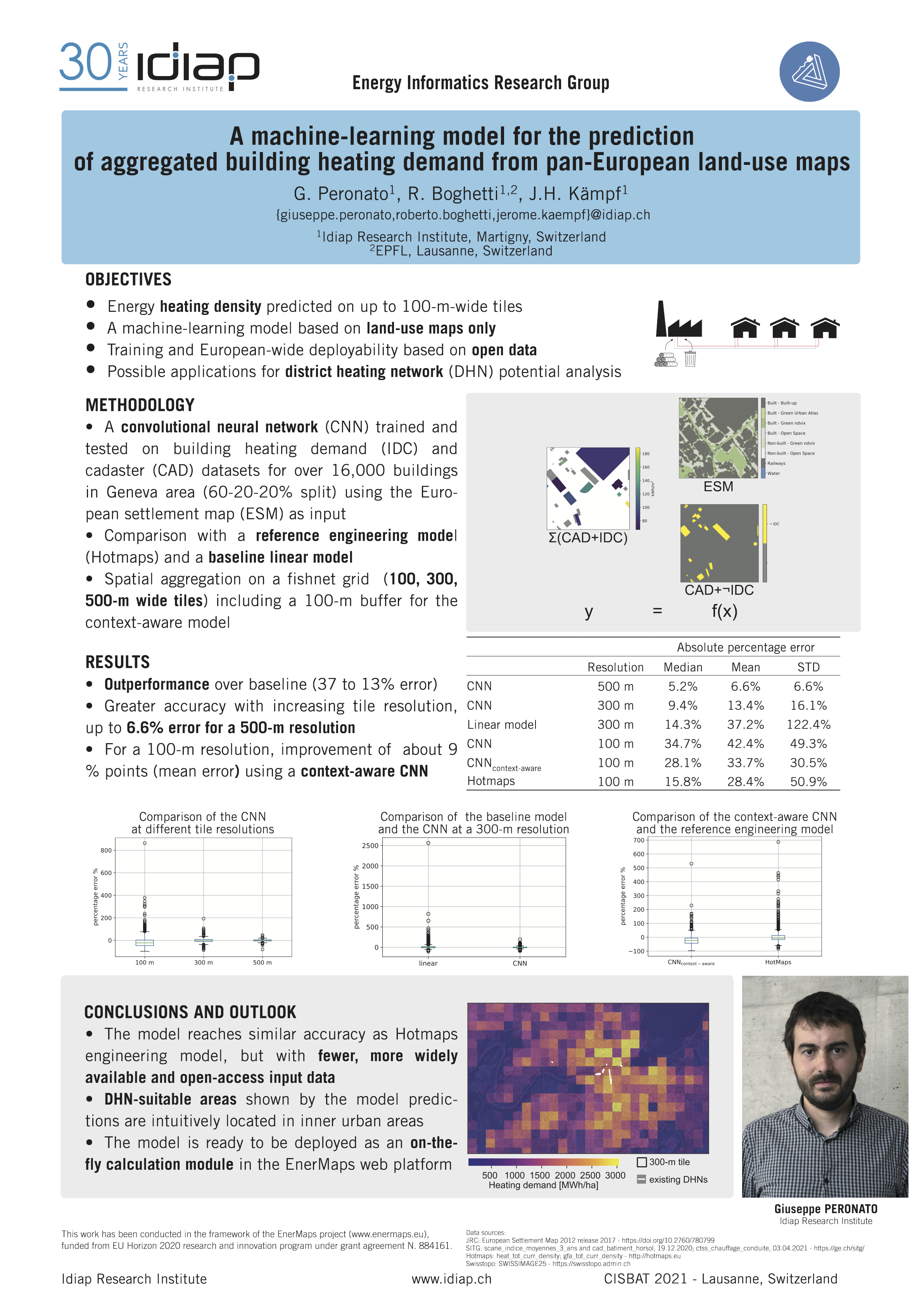A machine-learning model for the prediction of aggregated building energy demand from pan-European open datasets
Abstract
Aggregated building energy demand is a useful indicator for urban energy planning. It can be used by planners and decision-makers to identify clusters of high energy demand in a given urban area and efficiently plan, for example, district heating networks. Various data sources exist at the pan-European level describing land use and built areas. Combined with statistical data, such maps have been used in previous research for estimating building energy performance aggregated at the hectare level, using engineering assumptions. In this paper, we show that large-scale land-use maps alone can be used for predicting annual building energy demand with an accuracy comparable to the one of previous engineering models. We hence present a preliminary method based on Convolutional Neural Networks at different spatial resolutions. The resulting model was trained and tested in an area of about 170 km2 in Geneva (Switzerland) using a local annual heating demand dataset comprising 16239 buildings. On a 300-m aggregation tile, the obtained mean error (14.3%) is significantly reduced compared to the one of a simple linear model (37.2%). Using solely land-use data, we also achieve similar results for a 100-m tile as those of an engineering model from the literature.
